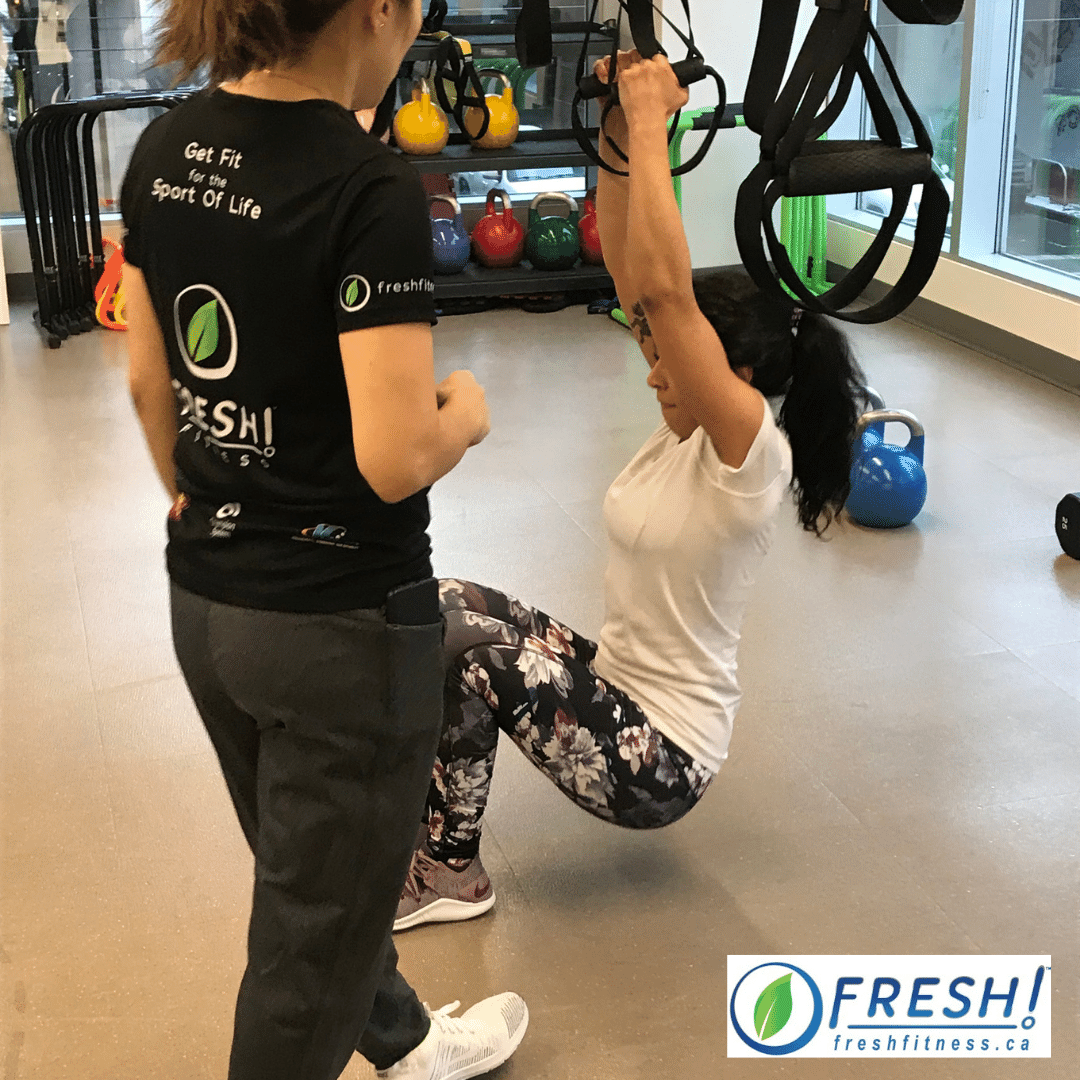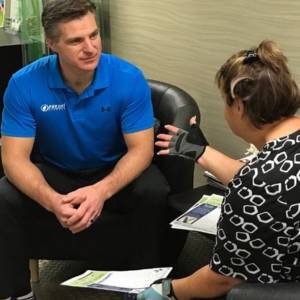Fitness, Fascia & The 1-Year Impact of Work From Home Living
I’ve noticed some very interesting (and concerning) changes to clients over the past couple of weeks. Since the studio is back open for Private Coaching, it’s been great to see clients in person again.
 Some clients have been working with us regularly online for the past year, while others “took some time off” from training.
Some clients have been working with us regularly online for the past year, while others “took some time off” from training.
I figured the latter group would be somewhat deconditioned when they came back, but I’m genuinely surprised (and saddened) at how much they are struggling with a number of health, fitness, and movement challenges.
While I understand that the past year has been hard physically mentally, and emotionally for many people, it was eye-opening to see how much of an impact it had on clients who we hadn’t seen in person for a year.
The contrast to those who’ve continued working with our coaches is stark and demonstrates the impact that a simple, consistent plan can have on health, happiness, and performance.
People who were healthy, fit, and moving well last year are now wracked with aches, pains, immobility, decreased strength, inhibited body awareness, and often an overwhelming sense of frustration with their current situation.
Those who’ve maintained a routine of small daily activities and weekly coaching accountability are stronger, healthier, and thriving despite still working from home.
From the logical perspective, it makes perfect sense. Across the country, general daily activity levels are at an all-time low, people are stressed, moving less, eating poorly, drinking more, and are sitting for astronomically long periods of time each day.
The solution to these challenges is exceedingly simple, yet not something most people manage to do on a daily basis.
Having a proven and easy-to-follow plan plus a weekly appointment with your coach helps take guessing and randomness out of the equation. It also helps keep you accountable for the goals you set for yourself.
Again, it’s not complicated or difficult, yet the results are clearly evident.
Those who “took time off” and didn’t follow a regular activity and self-care plan have felt the physiological toll. Here’s just a shortlist of the impact:
- Their brain/muscle connections have degraded
- Hormone profiles have shifted
- They are bathing in cortisol and stress hormones
- Blood lipid profiles have changed with LDL rising and HDL decreasing
- Hypertension is increasing
- Insulin resistance is beginning
- Their fascia has adapted to sitting and lack of movement
To highlight the issue from just one perspective, let’s expand on the fascia point.
Fascia is a type of connective tissue that’s found throughout your body. According to Bordini, et al in their 2020 Facial Anatomy textbook, “The fascial system interpenetrates and surrounds all organs, muscles, bones and nerve fibres, endowing the body with a functional structure, and providing an environment that enables all body systems to operate in an integrated manner.”
Like a muscle, fascia has contractile properties, but unlike muscle, it contracts and develops slowly over time.
Fascia responds, adapts, strengthens, and thickens based on movement and lines of force through the body. This happens slowly over 3-18 months, depending on your type, level and consistency of movement…or lack thereof.
One year of excessive sitting and low activity has fundamentally transformed your physical structure. Fascia has tightened various areas of your body, particularly the front of your hips, shoulders, and neck. Combined with a lack of movement skill practice for most people, this results in a restricted range of motion and greater challenges with performing movement patterns.
People think they are just “tight” and need to stretch muscles, but this doesn’t account for the role of fascia. Remember, it takes 3-18 months to adapt and respond.
We are 12 months into the pandemic process and those who’ve been inactive have some serious fascia challenges to overcome.
Getting back into a routine and seeing the movement/fitness deficits can be eye-opening. This is where an unsupervised routine can lead to further frustration and injury.
All of these negative physiological adaptations contribute to a degradation in both physical and mental health.
On top of that, a huge segment of the population is dealing with the reality of the “quarantine 15”. Their mental health status can make it more challenging to see a way out of their current situation.
For much of the past year, people have been in a negative spiral and many are just now beginning to see and embrace the journey in front of them.
The great news is that while not always easy, the path out of the negative spiral is simple and works whenever applied effectively.
Regular physical movement is at the heart of that positive transformation. It makes it easier to apply both the mindset and habits necessary to thrive.
The kernel of change develops from a belief that the future can be better. Then grows into a decision to take the most simple first step.
That first step can be on your own, with a friend, or through the assistance of an expert coach.
Whichever option you choose, taking action is the most important part.
If you want a better, healthier, happier, higher-performing future and believe it’s possible then your path is waiting for you to stand up and take the first step.
Remember, you don’t have to know HOW to get there. You just have to believe it’s possible for you to accomplish it and be willing to take action.
When you are ready to make that journey faster, fun, and more effective, I’m here to help. Just email info@freshfitness.ca to get started!
Be well. Stay safe. Keep active!



